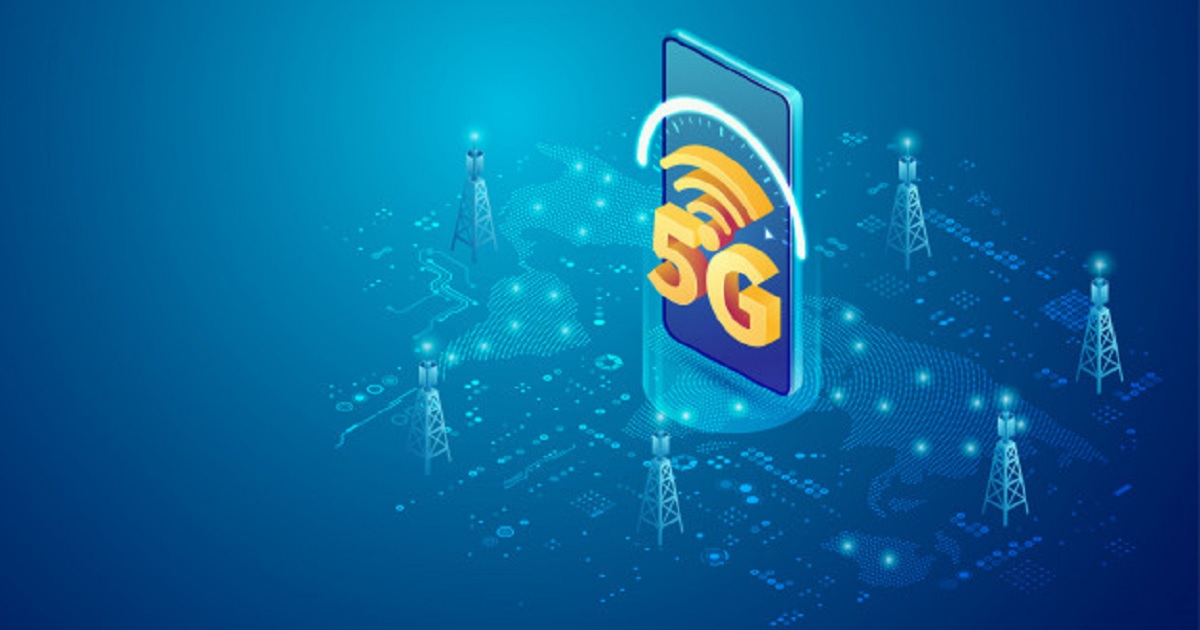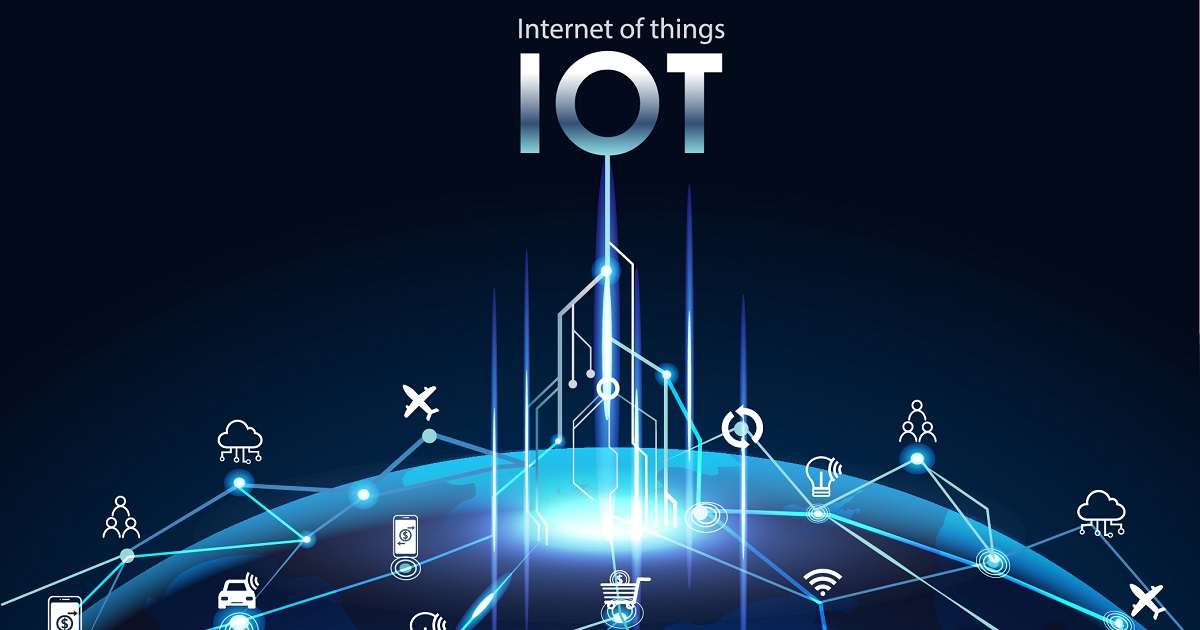
IoT Security
Article | June 28, 2023
Artificial intelligence (AI) has already made headway into becoming a general-purpose technology vastly impacting economies. Yet, the interpretation and estimated trajectory for something remotely close to what we call AI now was first explored in the 1950s.
Until this very day, AI keeps on evolving further. Though let’s face it, AI would have been useless without data. With around 2.5 quintillion bytes of data being generated every day, the numbers will shoot up as the Internet of Things (IoT) enters the game.
Let’s see what this is all about and where and how exactly IoT crosses paths with AI applications.
IoT fundamentals: Where does IoT meet AI
The benefits of IoT in AI
Challenges of IoT in AI
Why implement machine learning in IoT
IoT applications for AI
Key takeaways
IoT fundamentals: Where does IoT meet AI?
What is meant by the term internet of things (IoT) is essentially a system of correlated digital and mechanical appliances, computing devices, and sensors embedded often into everyday objects that transfer data over a network. IoT connects the internet to any and every physical thing or place in the world.
Modern IoT has advanced from the mere merging of microelectromechanical systems to wireless technologies, and faster data transfer through the internet. This resulted in a confluence of information technology and artificial intelligence, allowing unstructured machine-generated data to be evaluated for insights that could lead to new developments.
More and more industries are now referring to IoT to function more proficiently, provide better customer service, escalate the significance of their business, and implement robust decision-making.
Machine learning for IoT can be used to identify anomalies, predict emerging trends, and expand intelligence through the consumption of audio, videos, and images. The implication of machine learning in IoT can substitute manual processes and offer automated systems using statistically backed up actions in critical processes.
The benefits of IoT in AI and real life
IoT offers the following benefits to AI applications:
IoT data for business purposes
Cost and time savings
Task automation and reduction of human intervention
Higher quality of life
IoT data for business purposes
IoT can also be viewed as a data pool. That means by aggregating IoT data, one can extract useful data-driven feedback, which in turn (used properly) may foster effective decision-making. Businesses can also identify new market opportunities, not because of IoT itself but by using the data IoT provides. And since IoT offers companies access to more data, and hence advanced analytics of that data, its usage can eventually result in improved customer outcomes and enhanced service delivery.
Cost and time savings
When devices get connected, cost reductions come along with it. The gathering of different data allows for advances in efficiency, and it leads to money surplus and low-cost materials.
Task automation and reduction of human intervention
Nowadays, devices that are internet-connected can be found in every aspect of our lives, and it is safe to say that they make tasks easier. These automation features range from real-time AI-powered chatbots to home automation control systems, and all of it usually takes a click of a button.
For businesses offering AI-enabled solutions, similar advancements can be achieved with pipeline automation too. That includes significant cuts in annotation and QA time. By leveraging SuperAnnotate’s platform, hundreds of companies recorded faster task completion and more accuracy in prediction results.
Higher quality of life
IoT is not only beneficial in the business aspects but it also creates better living circumstances for us. Smart cities and agriculture, intelligent homes, and food waste solutions are some of the most common ways of IoT providing better, more sustainable living conditions for people.
Challenges of IoT in AI
Despite the numerous benefits and advancements that IoT brings to the table, there have been a few limitations with it. Some of them are listed below:
Privacy issues
Data overflow
Bug issues
Compatibility issues
Privacy issues
With the increased connection between multiple devices or their coexistence for model development purposes, more information is shared between them, which poses vulnerability to your data and makes room for caution. Added layers of protection are needed to prevent risks of data leaks and other threats.
Data overflow
Eventually, organizations will have to find a way to deal with the large numbers of IoT devices, and that will include the collection and systematic management of all the data from those IoT devices. The proper use of data lakes and warehouses, close governance, and intuitive arrangement of datasets will become an utmost priority.
Join hundreds of leading companies who build super high-quality training data up to 5x faster using SuperAnnotate’s intuitive data curation and robust project management features.
Bug issues
If one IoT device has a bug in its system, there is a large chance that every other connected device will also have it.
Compatibility issues
Because there are no international standards of compatibility for IoT, it's harder for different devices to communicate with one another.
Why implement machine learning in IoT
More and more companies are combining IoT with machine learning projects so they can achieve analytical skills on a large variety of use cases which allows their businesses to have access to fresh insights and adopt innovative automation. By implementing machine learning for IoT, they can leverage the following:
Convert data into a coherent format
Arrange the machine learning model on device, edge, and cloud
Enable use of data on edge devices directly for complex decision making
IoT applications for AI
Although we have covered the basics of IoT, its implications for AI are not as simple. Many corporations are adopting IoT which allows them to have an advanced approach to growing and advancing their business. Novel IoT applications are offering organizations the ability to plan and implement more vigorous risk management strategies. Some of the more common uses of IoT in AI encompass the following:
Transport logistics
Not only does IoT expand the material flow systems in transport logistics, but it also improves the automatic identification and global positioning of freight. It also increases energy efficiency and consequently declines the consumption of energy.
Smart cities
Although the term smart city is still incomplete, it mainly refers to an urban area that endorses sustainable enlargement and high quality of life. Giffinger et al.’s model explains the features of a smart city, including the people, the government, the economy, and lifestyle.
E-health control
The two main objectives of future health care are e-health control and prevention. People nowadays can choose to be monitored by physicians even if they do not live in the same country or place. Tracing and monitoring peoples’ health history makes IoT-assisted e-health extremely useful. IoT healthcare solutions could also benefit the specialists, as they can collect information to advance their medical calculations.
Key takeaways
Ever since its development, IoT, especially AI-enabled IoT, as discussed, has been enhancing our daily lives and directing us to work smarter while having complete control over the process. Besides having smart appliances to elevate homes, IoT devices can also be essential for providing insights and an actual look for businesses into their systems. Heading forward, IoT will continue to develop as more organizations get to understand its potential usage and tangible benefits.
Read More

IoT Security
Article | June 27, 2023
The year 2020 was supposed to be a breakthrough year for many technologies but, most businesses have now been forced back into building an infrastructure to transit their workforce to work remotely and ensure continuity of workflow. Nevertheless, an unprecedented set of events have pushed several industries to accelerate the adoption of technologies as they continue to work from home.
5G and Wi-Fi 6 are two tech advancements that have been turning eyes around the world since their introduction. The two wireless technologies are well on their way to revolutionize the Internet of Things as businesses move fast towards digitization and the world is excited.
Table of Contents:
- Wi-Fi 6: A Breakthrough in Wireless Technology
- 5G: For a Better Connected World
- How are Wi-Fi 6 and 5G Transforming the IoT?
- 5G and Wi-Fi 6: Rivals or Allies?
Wi-Fi 6: A Breakthrough in Wireless Technology
The next-generation Wi-Fi with boosted speed was introduced last year to meet the demand for faster internet amongst the rising internet users. But, Wi-Fi 6 is simply more than a tweak in the speed.
Technically called 802.11ax, Wi-Fi 6 is the advancement in the wireless standard doing the same basic things but with greater efficiency in the device-dense areas, and offering much greater bandwidth than its predecessor 802.11ac or Wi-Fi 5. Wi-Fi 6 promises a speed up to 9.6 Gbps up four times than that of Wi-Fi 5 (3.5Gbps). In reality, this is just a theoretical maximum that one is not expected to reach. Even still, the 9.6Gbps is higher speed and doesn’t have to go to a single device but split up across a network of devices.
A new technology in Wi-Fi 6 called the Target Wake Time (TWT) lets routers set check-in times with devices, allowing communications between the router and the devices. The TWT also reduces the time required to keep the antennas powered to search for signals, which in turn also improves battery life.
Wi-Fi 6 also comes with a new security protocol called WPA3, making it difficult to hack the device passwords by simple guesswork.
In short, Wi-Fi 6 means better speeds with optimized battery lives, and improved security.
5G: For a Better Connected World
5G is the next in line to replace 4G LTE. While Wi-Fi covers small scale internet requirements, cellular networks like 5G are here to connect everyone and everything virtually on a larger scale.
The technology is based on the Orthogonal frequency-division Multiplexing (OFDM) that reduces interference by modulating a digital signal across several channels. Ability to operate in both lower bands (like sub-6 GHz) and mmWave (24 GHz and above), 5G promises increased network capacity, low latency and multi-Gbps throughput. 5G also uses the new 5G NR air interface to optimize OFDM to deliver not just better user experience but also a wider one extending to many industries, and mission-critical service areas.
The 5G technology, in a nutshell, has brought with it ultra-high speeds, increased and scalable network capacity, and very low latency.
How are Wi-Fi 6 and 5G Transforming the IoT?
5G and Wi-Fi 6 will fill up the speed gaps that our existing networks are not able to especially, in crowded homes or congested urban areas. It's not just about the speed. The two wireless technologies will increase network capacity and improve signal strengths.
On the business front, 5G and Wi-Fi 6 are both living up to the hype they created since their introduction.
Wi-Fi 6 has emerged, as the enabler of converged IoT at the edge. It has put IT into OT applications, connected devices and processed data from devices such as IP security cameras, LED lighting, and digital signage with touch screen or voice command. Wi-Fi 6 can now be used in office buildings for intelligent building management systems, occupancy sensors, access control (smart locks), smart parking, and fire detection and evacuation.
It’s (Wi-Fi 6) built for IoT. It will connect many, many more people to mobile devices, household appliances, or public utilities, such as the power grid and traffic lights. The transfer rates with Wi-Fi 6 are expected to improve anywhere from four times to 10 times current speeds, with a lower power draw, i.e. while using less electricity.
- Tom Soderstrom, IT Chief Technology and Innovation Officer at NASA’s Jet Propulsion Laboratory (JPL)
Similarly, 5G will open doors for more devices and data. It will increase the adoption of edge computing for faster data processing close to the point of action. The hype around 5G is because of the three key attributes it comes with: enhanced mobile broadband (eMBB), ultra-reliable low-latency (uRLLC), and massive IoT device connectivity (mMTC). But there is the fourth attribute that sets it apart from its predecessor: use of a spectrum that operates at the low-end frequency range (typically 600 MHz). Called as ‘low-band 5G’, it delivers high speeds with signals that go for miles without propagation losses and ability to penetrate obstacles. The 5G operates in the new millimetre-wave bands (24 to 86 GHz) delivering more capacity to enable many low-power IoT connections.
If we were to point down the benefits, these two wireless technologies are bringing to the Internet of Things those would be:
Increased Human-Device Interactions
Increased Data and Devices
More IoT investments
Advancing to the Edge
Acceleration towards Industrial IoT
Enhanced use of IoT devices
Better VUI
5G and Wi-Fi 6: Rivals or Allies?
In February, Cisco estimated that by 2023 M2M communications will contribute to 50% or about 14.7 billion of all networked connections. Cisco’s Annual Internet Report reveals that 5G will enable new IoT applications with greater bandwidth and lower latencies and will accelerate innovations at scale. The same report estimates that 10.6% of global mobile connections in 2023 will be 5G, while Wi-Fi 6 hotspots will be 11.6% of all public Wi-Fi hotspots growing 13 times from 2020 through 2023.
Wi-Fi6 will serve as a necessary complement to 5G. A significant portion of cellular traffic is offloaded to Wi-Fi networks to prevent congestion and degraded performance of cellular networks (due to demand).
- Thomas Barnett, Director of Thought Leadership, Cisco Systems
The two technologies are here to feed different data-hungry areas with gigabit speeds.
With lower deployment costs, Wi-Fi 6 will be dominating the home and business environments where access points need to serve more users covering devices like smartphones, tablets, PCs, printers, TV sets, and streaming devices. With an unlicensed spectrum, the performance of Wi-Fi 6 depends on the number of users, that are using the network at the same time.
5G, with its longer range, will deliver mobile connections and accelerate smart city deployments and manufacturing operations. Like LTE, 5G speeds will depend upon users’ proximity to base stations and the number of people using that network.
The performance of the two depends largely on the area where they are being deployed. For instance, Wi-Fi can very well handle machine-to-machine communications in a managed manufacturing unit, whereas 5G can enhance campus-wide manufacturing operations efficiently. Businesses will have a decision to make which among the two wireless networks fulfils their data appetite.
In conclusion, the two wireless technologies continue to develop in parallel and causing the next big wave in the Internet of Things.
Read More

Enterprise Iot
Article | July 20, 2023
Modern computing devices can be thought of as a collection of discrete microprocessors each with a dedicated function like high-speed networking, graphics, Disk I/O, AI, and everything in between. The emergence of the intelligent edge has accelerated the number of these cloud-connected devices that contain multiple specialized sub-processors each with its own firmware layer and often a custom operating system. Many vulnerability analysis and endpoint detection and response (EDR) tools find it challenging to monitor and protect devices at the firmware level, leading to an attractive security gap for attackers to exploit.
At the same time, we have also seen growth in the number of attacks against firmware where sensitive information like credentials and encryption keys are stored in memory. A recent survey commissioned by Microsoft of 1,000 security decision-makers found that 83 percent had experienced some level of firmware security incident, but only 29 percent are allocating resources to protect that critical layer. And according to March 2021 data from the National Vulnerability Database included in a presentation from the Department of Homeland Security’s Cybersecurity and Infrastructure Agency (CISA) at the 2021 RSA, difficult-to-patch firmware attacks are continuing to rise. Microsoft’s Azure Defender for IoT team (formerly CyberX) recently announced alongside the Department of Homeland Security a series of more than 25 critical severity vulnerabilities in IoT and OT devices
Read More

Enterprise Iot, Infrastructure
Article | May 31, 2023
Discover the crucial role of big data capabilities in unlocking the potential of IoT for businesses. This article covers their synergy, challenges, and value in decision-making and revenue generation.
Contents
1 Why Big Data and IoT Matter for Businesses
2 Understanding Synergy of Big Data and IoT
2.1 How IoT generates Big Data
2.2 Challenges of Processing Big Data from IoT Devices
2.3 Importance of Big Data in IoT Applications
3 The Value of Big Data and IoT for Businesses
3.1 Improved Decision-making for Businesses
3.2 Generate New Revenue Streams
4 Final Thoughts
1. Why Big Data and IoT Matter for Businesses
The internet of things (IoT) is connecting all types of physical assets to the internet, from smart wearables that track wearer’s vitals to connected industrial units that can report any malfunctions automatically. Big data in IoT is a natural outcome with the growth of IoT devices, with an immense surge in the amount of data being generated.
There are currently over 13 billion connected IoT devices worldwide.
(Source – Techjury)
This data is extremely valuable to businesses as it can help streamline operations, predict trends, and diagnose device issues. Certain functions of IoT devices that are crucial for modern businesses, such as enabling predictive maintenance, depend on the analysis of the data generated every second. However, to maximize the ROI from their IoT ecosystem, businesses must first manage and process the vast amounts of unstructured data they produce. This is where big data capabilities come in.
2. Understanding Synergy of Big Data and IoT
Big data and the IoT are fundamentally different concepts, but are closely connected. Big data is a term that is used for a great amount of data that is characterized by volume, velocity, variety and veracity (or the ‘trustworthiness’ of data). The IoT is a term for physical devices or objects linked to the internet using an assortment of technologies. Understanding the synergy between these two technologies will be critical for businesses looking to leverage their full potential.
2.1 How IoT generates Big Data
IoT is one of the primary drivers of big data growth. The vast number of interconnected devices in the IoT ecosystem generates a massive amount of data every second. This data includes information on user behavior, device performance, and environmental conditions, among others.
The nature of this data makes it challenging to store, process, and analyze using traditional data management tools. This is where big data technologies such as Hadoop, Spark, and NoSQL databases come in, providing the ability to manage massive amounts of data in near-real-time, enabling critical applications of big data in IoT. For businesses, processing IoT data is synonymous with processing big data, due to the nature of the data generated by an IoT ecosystem.
2.2 Challenges of Processing Big Data from IoT Devices
IoT data processing is a complex and challenging task due to several reasons. Firstly, the sheer volume of data generated by these devices is enormous and is only increasing. This requires a robust infrastructure and specialized tools to store, manage, and analyze the data efficiently.
This data is also generally unstructured, heterogeneous, and complex, making it difficult to process using traditional data management and analysis techniques. Moreover, it is often noisy and may contain errors or outliers, which can impact the accuracy of data analysis. Businesses also face a challenge when securing such vast amounts of data. Since IoT devices collect sensitive information such as personal and financial data at scale, it is critical to ensure that data is encrypted, transmitted securely, and stored safely.
Additionally, IoT devices often operate in remote locations with limited connectivity, making it challenging to transmit data to the cloud for storage and analysis. As IoT devices continue to proliferate and generate increasingly large amounts of data, businesses must adopt big data technologies to gain actionable insights from this data.
2.3 Importance of Big Data in IoT Applications
There are several use cases of the IoT where processing large amounts of data is essential. It plays a critical role in IoT applications, providing businesses with valuable insights that can be used to optimize processes, reduce costs, and improve overall efficiency. By collecting and analyzing large amounts of data from IoT devices, businesses can gain a better understanding of customer behavior, machine performance, and other critical metrics.
For example, big data in IoT can be used to identify patterns in customer behavior, allowing businesses to tailor their marketing efforts and improve customer engagement. Additionally, IoT devices can be used to collect data on machine performance, allowing businesses to identify potential problems before they occur, minimize downtime, and optimize maintenance schedules. The value of big data in IoT applications lies in its ability to provide businesses with real-time insights that can be used to drive growth, reduce costs, and improve overall efficiency.
3. The Value of Big Data and IoT for Businesses
Businesses looking to integrate big data in IoT must first consider their data storage and analytics capabilities. By understanding the value of big data technology in capturing and analyzing IoT-generated data, businesses can unlock insights that can help them make better decisions, optimize processes, and create new business opportunities.
3.1 Improved Decision-making for Businesses
IoT and big data technologies offer businesses a wealth of data that can be used to make better-informed decisions. By integrating IoT sensors and devices with their operations, businesses can collect real-time data on customer behavior, operational performance, and market trends. This data can then be analyzed using big data analytics tools to generate valuable insights that can inform decision-making.
For example, operational data can be analyzed to identify inefficiencies and areas for optimization, helping businesses reduce costs and improve efficiency. With the right data storage and analytics capabilities, businesses can leverage the power of IoT and big data to gain a competitive advantage and make better-informed decisions that drive growth and success.
3.2 Generate New Revenue Streams
By leveraging the vast amount of data generated by IoT devices and analyzing it with big data analytics tools, businesses can gain insights into customer behavior, market trends, and operational performance. These insights can be used to create new revenue streams and business models, such as subscription-based services, pay-per-use models, and predictive maintenance services.
For example, IoT sensors can be used to collect data on equipment performance, allowing businesses to offer predictive maintenance services that help prevent equipment breakdowns and reduce downtime. Similarly, customer data can be analyzed to identify new revenue opportunities, such as personalized product recommendations and targeted advertising. With the right strategy and investment in IoT and big data technologies, businesses can unlock new revenue streams and create innovative business models that drive growth and success.
4. Final Thoughts
Big data in IoT is becoming increasingly important for businesses, and the future prospects are bright. As IoT continues to grow and generate more data, businesses that can effectively analyze it will gain a competitive advantage, leading to increased efficiency, reduced costs, and higher ROI. To fully realize the benefits of IoT, businesses must develop big data analytics and IoT devices in tandem, creating a feedback loop that drives continuous improvement and growth. By embracing these technologies, businesses can make data-driven decisions and unlock new insights that will help them thrive in the years ahead.
Read More